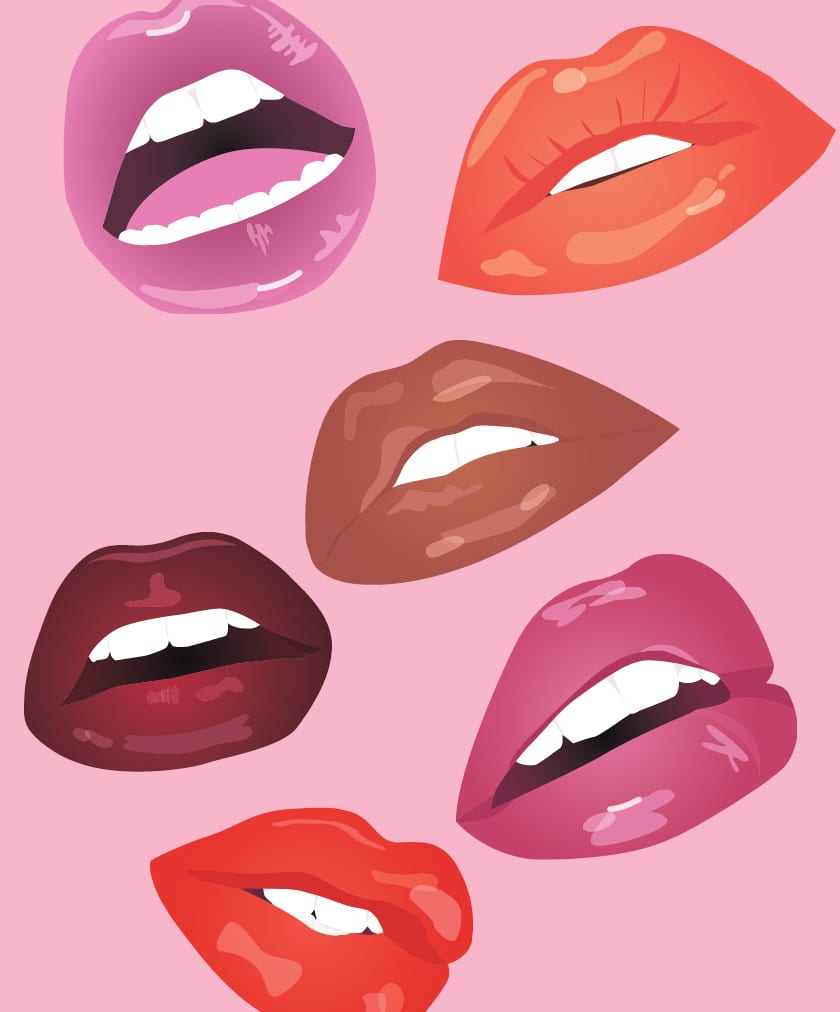Farewell, fine lines. Buh-bye, bleeding lipstick.
Originally published February 7, 2019 in The Kit
I’m afraid of duckies. Not the quacking kind, but the duck-lips variety. Since the exploding popularity of dermal fillers in the late ’90s, I’ve watched as women inflated their lips to extremely obvious and sometimes hilarious proportions. (They call it trout pout for a reason, friends!) It wasn’t a look I aspired to, so I didn’t think there was much I could do when fine lines started appearing across my top lip like a flotilla of tiny weeds.
My deep and abiding love for intense lipstick wasn’t helping matters, either—even stay-on formulas eventually smeared into the tiny cracks that multiplied by the day. My mouth was starting to look like my cat’s bum, which she enjoyed displaying to me with horrifying regularity. Clearly, something had to be done.
First, I tried felt-tip-marker-inspired lip liners like Rouge Dior Ink Lip Liner in an attempt to hold back the tides of seeping product. This helped a little, but I wanted something more permanent. I skipped over the many plumping creams that are specially formulated for this area—I’m too impatient!—and went straight to the office of Toronto facial plastic surgeon Cory Torgerson.
Torgerson quickly outlined the problem for me. “This is thin skin on top of a very dynamic muscle,” he explained, “and the muscle is a squeezer muscle, so it puckers the skin on top.” Basically everyone eventually develops lines above their talking and eating “squeezer”—smokers or not. (Those lines got that nickname because smokers are often pursing their lips around their shame sticks, and smoking can thin the skin more, but Torgerson prefers to call them “bar code lines.”)
Luckily for me, it turns out that stiff old-school fillers—and their resulting Zoolander-esque pout—are no longer the only tragic end available to withering lips. The gold standard for treating them is still a Co2 fractional laser, which basically removes several layers of skin, requiring sedation, prescription medication for pain afterwards and up to two weeks downtime (like, hide-in-your-house, you-look hideous, the-sun-is-your-enemy downtime). The good news is that the results last up to a year and a half. The bad news is everything else.
“Lip fillers or hyaluronic acid fillers are a lot more au courant because there’s no downtime,” he says. “But truthfully there hasn’t been a really fabulous product until recently. They’ve all been really thick and have created lumps and bumps.”
Torgerson is pumped about a newish product called Teosyal RHA 1 (there are four levels of the RHA line, but 1 is specifically designed for the finest lines on lips and around the eyes). Like many fillers, it’s hyaluronic-acid-based, but its chemical makeup more closely resembles the HA the body naturally produces. “The main problem people have with fillers is that they’re too hard and they look fake,” he says. “This line was designed to stretch, so we can inject it exquisitely superficially and when you smile and talk it moves, so it looks natural… We call it 3-D filler.”
But first he wants me to do three treatments of V2 Beauty Booster, which uses a special micro-needling tool to inject another hyaluronic Teosyal product called Redensity1 all over my face just under the skin, including into those pesky lines. “It’s really good for thickening up and bringing hydration to the skin. You’ll look really glowy. Your skin will be like angels singing!” he promises.
The Beauty Booster treatments are three weeks apart. The tool is basically a tiny gun loaded with the product in nine evil little needles that the aesthetician zaps all over my face, delicately mopping up blood spots as she goes. It doesn’t tickle, but they use numbing cream beforehand, so I make it through. Afterwards my face is covered in small bumps and looks like raw turkey skin, which, I discover, is a great way to terrify people on the subway. It subsides by the next day, aside from some small bruises.
By the end of the almost three-month regime, my face definitely looks juicier, but the dastardly lip lines haven’t subsided much. Torgerson tells me I should be using retinols, exfoliating with glycolic acid and applying moisturizer and sunscreen to the area, just like I would on the rest of my face. I realize that I’d been unconsciously skipping this area when using products since my teens, when I used to get pimples around my lips. I commit to babying my kisser from here on in, but now it’s time for the big guns.
“I don’t want volume,” I warn Torgerson for probably the 70th time as he comes at me with a specially designed Teosyal pen full of RHA 1, a tool that he tells me allows him to touch up precise spots with small drops of the product just under the skin. “With this I’m not worried about pressing a big plunger,” he says. “I’m doing artwork to the face.”
He pokes, leans back, pokes again and leans back, staring at my lips like he’s drawing. After a bunch more small pokes, he also fills in a small divot I have on my bottom lip due to a long-ago scar and then massages my lips a bit with his fingertips. The whole thing takes about 10 minutes. Afterwards he leads me to a mirror. My lips look just slightly fuller, like a perfect Cupid’s bow—and the row of tiny lines is gone. It costs $740 and will last about six months.
“See?” he says. “No ducky!”
I finally lost my lip-filler virginity—and at least it wasn’t to a duck.
